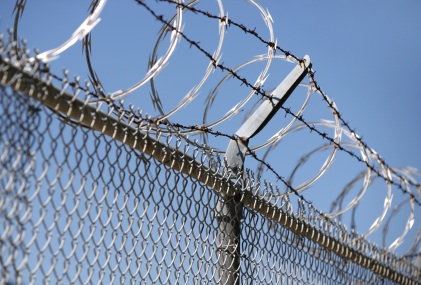chelseaGREEN The entire economic system in the United States needs to be put under a magnifying glass. That’s not a new notion, obviously, but it’s one worth repeating. For example, we cannot seem to figure out how to get healthcare and education to those in need, and yet we’ve got billionaires languishing in their mansions. So I suppose it doesn’t come as too huge of a shock when told the US incarcerates more people than any other industrialized nation in the history of the world, one that also claims to be the freest.
The following is an excerpt from How The Rich Are Destroying the Earth by Hervé Kempf.
Alongside the terrorism bogey, it’s useful to wave another straw man: crime and security.
When not tackled politically or by the collective conscience, social inequality increases frustration and the desperate need to find a way out. Hence the pressure of “crime” in rich countries and the pressure of migration from the South toward the North. To contain the effects of causes that they poorly understand, the lower and middle classes demand more “security” and accept the initially imperceptible reduction in the level of public freedoms.
In the arsenal of the war against the poor, the first weapon is prison. In the United States, the number of prisoners reached 2.2 million in 2005—it was 500,000 in 1980. And a new study by the Pew Center on the States found that between 2007 and 2011 that number will grow by another 200,000, and that currently more than one out of every 100 adults is behind bars in the United States. It’s the highest level in the whole world. You’d have to go look in the gulags of Stalin’s Russia or Mao Ze Dong’s China to find a higher number. That represents 738 prisoners per 100,000 inhabitants, seven times more, proportionally, than in France, which itself confines people with enthusiasm. One sign indicates the misery and suffering this situation involves: in 2005, Congress had to establish a commission for the elimination of rape in prison.
Moreover, the quality of “medical and psychiatric care in prisons goes from mediocre to terrible,” writes Human Rights Watch in its annual human rights report.
Prison does not strike the entire population equally: according to the statistics of the U.S. Bureau of Justice, 11.9 percent of African-American men between the ages of 25 and 29 were in prison, versus 3.9 percent of Hispanic men and 1.7 percent of white men in the same age group. The U.S. situation influences, let us note, other statistics: when economists applaud the supposedly low unemployment rate in the United States, they omit to mention that you would have to raise that number by at least 1 percent to take into account the fact that many people in prison, if they were free, would be unemployed.
In France, the incarceration rate has continued to increase during the last thirty years to reach a historic record of 98 per 100,000 inhabitants. The number of prisoners went from 29,500 in 1971 to 59,000 in 2005 (the reduction that began in 1996 was interrupted in 2002). That’s less than in Germany (78,600 prisoners in 2006) or in the United Kingdom (79,000).
French laws that increasingly restrict the legal freedoms and guarantees of the citizen in the face of the government arrive in rapid succession and come on top of the laws on terrorism: the November 15, 2001, law of “everyday security”; the March 18, 2003, law “on domestic security”; the March 9, 2004, Perben 2 law (“adapting the justice system to developments in criminality”); the June 2006 law “on crime prevention.” The texts broaden the grounds for genetic data filing, which was originally reserved for sexual crimes, introduce the notion of the “organized gang” to justify exceptional procedures, lift limitations on vehicle searches by the police, increase the investigatory powers of the judicial police to the detriment of the rights of defense, transform the mayor into the coordinator of crime prevention, favor the creation of municipal data files on those receiving social assistance payments, provide a tax deduction for the installation of surveillance cameras, create closed education centers for minors under sixteen, provide for the placement of children as young as ten years old in special education establishments, and make occupying transportation infrastructures a crime.


No comments:
Post a Comment